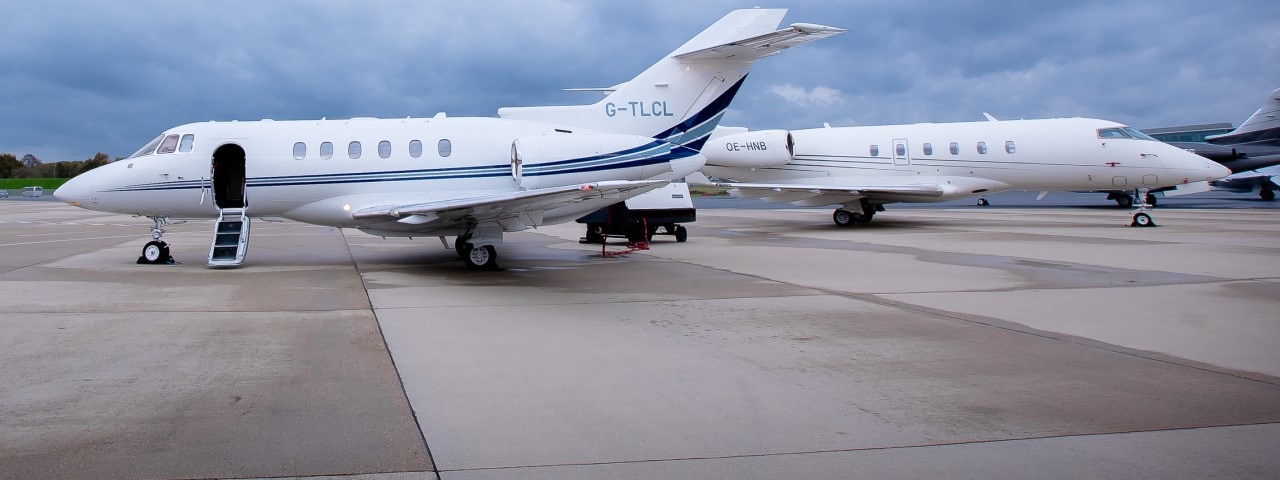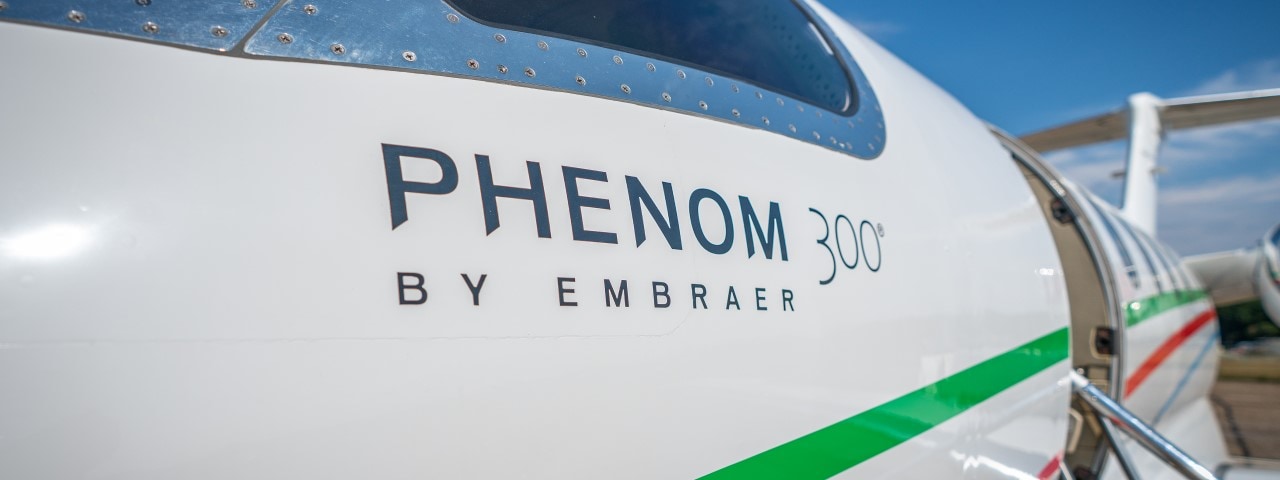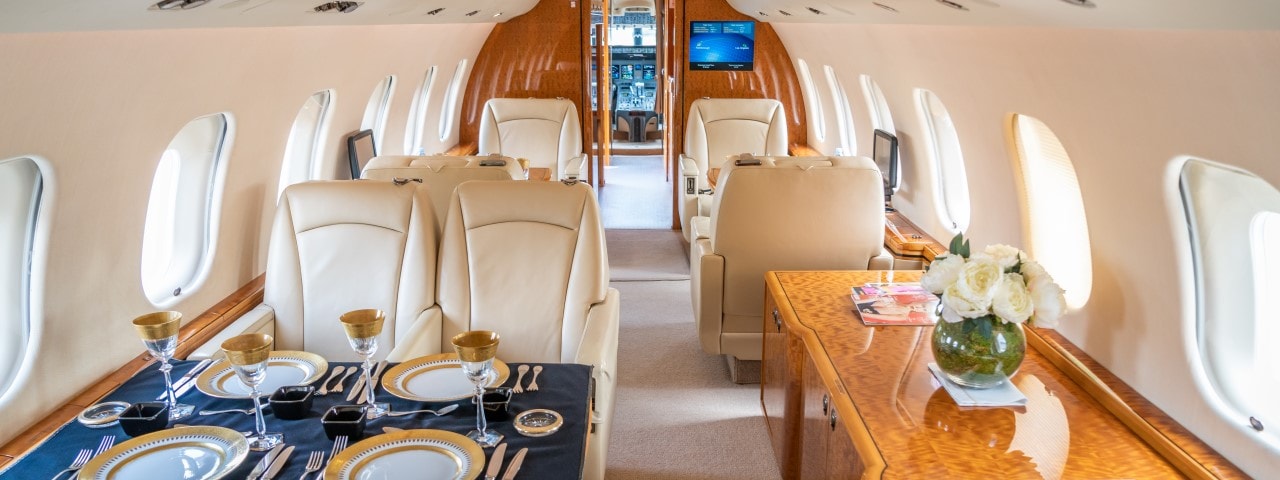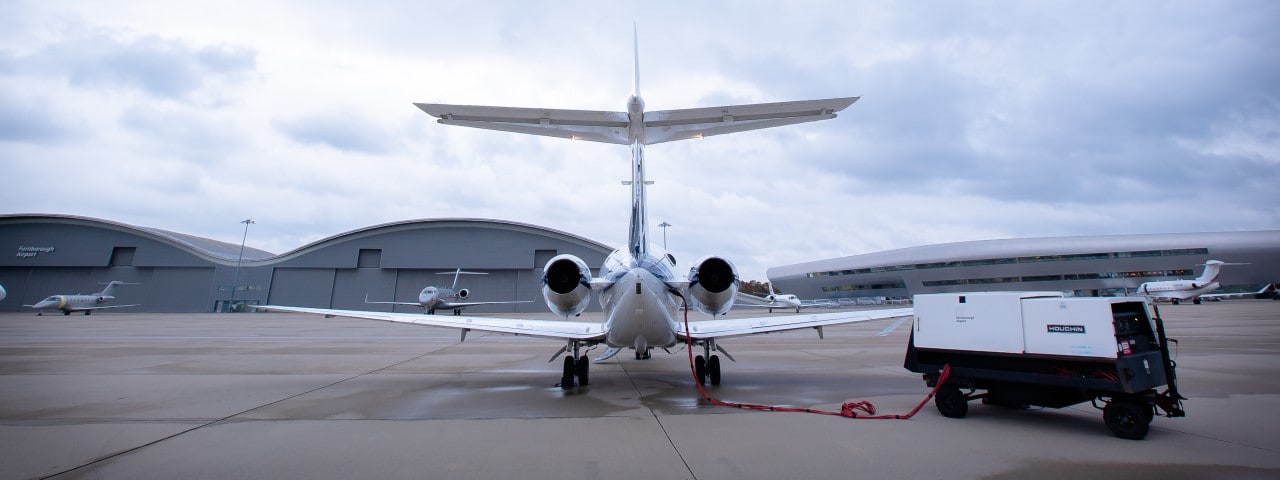How to choose a private jet
Whether you’re looking to buy or charter a private jet, with thousands to choose from it can be hard to pick the right one for you. Many factors can affect the decision-making process, but, ultimately, it comes down to what matters to you most, whether that’s:
- Manufacturer and safety record
- Cabin size, comfort and amenities
- Economical operation
- Range
- Age
- Speed
As charter experts with offices in seven continents across the world, we make choosing a private jet as simple and stress-free as possible. When you enquire about chartering a private flight with us, we’ll source a selection of the best available aircraft that suit your needs before helping you choose the best fit.
Aircraft manufacturers
Many manufacturers have been delivering premium private jets for decades. Here’s a summary of some of the best-known brands, which we regularly choose for our customers’ charters. Up-to-date safety records are available at the Aviation Safety Network.
Beechcraft
Formerly known as Hawker Beechcraft, this American-based manufacturer specialises in small turboprops like the King Air family. The company was acquired by Textron Aviation Group (which also owns Cessna) in 2013.
Bombardier
Owner of Canadair and Learjet, Bombardier is one of the biggest players in the private aviation industry and offer a diverse range of aircraft for short, medium and long-range flights. The heavy and ultra-long-range Challenger and Global lines are especially popular with buyers and charter customers alike, with the Global 8000 boasting one of the longest private jet ranges.
Cessna
Throughout the second half of the 20th century, Cessna was known as the largest private jet manufacturer in the world, producing some of the best very light and mid-size jets in the industry. The Citation Excel is a best-selling midsize, while the Citation Longitude is a sought-after option in the super-midsize class.
Embraer
This Brazilian manufacturer specialises in agricultural, military, commercial and private aircraft. Its business jets range from the very light Phenom 100 to the long-range Embraer Lineage, while the versatile Phenom 300 is a favourite amongst private jet users.
Dassault
Founded in 1929, the French manufacturer is renowned for producing several successful jets in the mid-size to ultra-long categories. The midsize Falcon 20 was its first Falcon aircraft and the Falcon 7X and 8X are successful heavy jets.
Gulfstream
Gulfstream is an American business jet manufacturer whose aircraft are easily recognisable by their distinctive oval windows. Its larger planes, like the G550, compete with Bombardier in the heavy jet class.
Piaggio Aerospace
Headquartered in Italy, Piaggio Aerospace is one of the world’s oldest aircraft manufacturers. The brand is renowned for successful smaller planes like the Avanti P180 and P180 II.
Pilatus
Founded in 1939, Pilatus specialises in turboprops like the nine-passenger PC-12. The Swiss manufacturer recently added the PC-24 light business jet to its fleet.
Cabin size, comfort and amenities
How to choose a private jet depends on a variety of factors based on your requirements. The first of these might be the size of the cabin. You may want an aircraft that has plenty of headroom and space to stretch your legs, or you may require a private jet that has enough seats to accommodate your party.
Generally speaking, as you move up the aircraft weight classes, the more space and seats you’ll have. The categories are:
- Piston propellers
- Turboprops
- Very light jets
- Light jets
- Super light jets
- Midsize jets
- Super midsize jets
- Heavy jets
- Ultra-long-range heavy jets
- VIP executive airliners (bizjets)
The number of seats available in each class depends on the aircraft configuration. There is a wide range of turboprops to choose from, but some of the larger aircraft are able to accommodate up to eight passengers. Very light jets are generally suitable for up to four passengers, while some light jets comfortably fly six passengers. This number increases to eight or nine in the mid-size and super midsize jet class, with heavy jets able to accommodate between eight and 12 passengers. Some aircraft in the ultra-long-range category can theoretically seat 18 passengers, however, we generally recommend a maximum of 14 for our charter customers. VIP executive airliners can seat 19 passengers, but some of these aircraft are able to accommodate far more.
Similarly to seats, the cabin’s size can vary between aircraft in the same weight class. For example, a Bombardier Learjet 35 (light jet) has a cabin size of 12.9 feet long, 4.9 feet wide and 4.3 feet high and has room for six passengers. If you want slightly more interior space, you could opt for a Cessna Citation Bravo (also a light jet), which measures 15.8 feet long, 4.8 feet wide and 4.8 feet tall, and is designed for seven passengers. However, you’re unlikely to feel the difference unless you upgrade to a midsize jet like the Hawker Beechcraft 800XPI – especially in the height. Like the Learjet 35, this aircraft is designed to fly six passengers, however, unlike its light rival, the mid-size jet boasts an interior size of 21 feet long, 6 feet wide and 5.8 feet high.
If overall comfort and modern amenities matter more to you than onboard space when choosing a private jet, consider a newer aircraft like Bombardier’s Challenger 350or the Embraer Praetor 600. On the other hand, older, unrefurbished models like the Cessna Citation II can be a cost-effective option for those who simply want to travel from A to B without all the bells and whistles.
However, there are exceptions to this rule. We delve into this further when we compare the differences between chartering an older aircraft versus a newer one.
Fuel Economy
While it might be a more obvious consideration if you’re buying a private jet - as it impacts the overall operational costs - an aircraft’s burn rate (how much fuel it burns during a flight) is still a major factor when chartering.
Although there are also some general rules of thumb – smaller jets normally burn less fuel and newer jets tend to outperform their older counterparts, for example – an aircraft’s fuel efficiency changes depending on a host of variables like speed and altitude, weather, take-off and landing, rates of climb, drag, the number of passengers and the amount of luggage.
The Embraer Phenom 100 is renowned for its comparatively low operating costs in the very light jet class, while the Bombardier Learjet 60XR is a surprisingly fuel-efficient midsize jet. Bombardier claims its Challenger 350 is the most cost-effective super-midsize jet to run and the Challenger 850 heavy jet has the hourly cost, range and flexibility of a much smaller jet.
Range
Completing a journey with the fewest possible stops can impact the cost and flight time of your charter, making range an important consideration for many of our customers when choosing a private jet.
The distance an aircraft can travel is often determined by its size and the number of passengers on board, with heavier jets designed to cover greater distances than lighter ones. Currently, the longest-range aircraft that can be chartered for private use is Boeing’s 787 business jet at 9,945 nautical miles (nm), but their 777X is set to surpass this with an 11,645nm range when it hits the market in 2025.
Bombardier dominates in the ultra-long-range and heavy jet category with the Global 8000 (7,900nm) and 7500 (7,700nm), but most ultra-long-range heavy jets like the Gulfstream G650ER (7,500nm) and Dassault Falcon 8X (6,450nm) can complete popular long-distance routes like Hong Kong to New York and Los Angeles to Sydney. Dassault claims their newest aircraft, the Falcon 10X, can fly even further, with a maximum range of 7,500nm.
When you drop down to the midsize category, most jets have a range of 1,500-3,000nm with four passengers – a crucial consideration if you’re planning a 2,229nm trip from New York to San Francisco, for example. The Gulfstream G150 can fly nonstop between most U.S. cities, while the Hawker 900XP (2,929nm) and Embraer Legacy 450 (2,963nm) are other midsize jets built to fly longer distances than their competitors.
Light jets tend to have a range of 800-1,800nm, even when they’re full to capacity. The Bombardier Learjet 36A is the outlier, flying four passengers non-stop for 2,550nm. Embraer’s Phenom 300 is also a popular long-range light jet that can transport seven passengers for 1,811nm, while the Dassault Falcon 10 (1,520nm) can complete transcontinental flights with six passengers on board.
Age
Newer isn’t always better when it comes to private jets – especially when you take into account personal preferences. Before weighing up any pros and cons, it’s important to note that aircraft inspection and maintenance criteria are very strict in the aviation industry. Most planes removed from service have simply become too uneconomical to run rather than unsafe.
Younger aircraft may feature the latest engine designs, aerodynamics and cabin systems, but the eye-watering cost of purchasing a brand-new private jet leads many operators and owners to opt for a cheaper, older model instead. They then use these savings to completely refurbish the inside of the aircraft with upgrades like re-covered seats, new panelling, and upgraded technology systems. They also invest in extra performance add-ons like hush kits and winglets that dramatically improve the performance of older aircraft.
Operators and owners will usually advertise these retrofitted aircraft for charter guests to enjoy, so don’t be concerned if your charter consultant recommends an older aircraft. Not only are they comfortable, but they can be cheaper to charter than newer ones. So, if the model you choose has been recently refurbished, you could save thousands while enjoying similar levels of luxury as you would on a brand-new private jet.
Speed
While most private jet charter clients prioritise comfort and price, some are more concerned with reaching their destination as quickly as possible – after all, time is money.
Ultra-long-range heavy jets and heavy jets tend to be the fastest private jets in the world. The more powerful engines in this class can propel aircraft to speeds above 700 miles per hour (mph), although average cruising speeds are generally lower. Leading the way in the ultra-long-range heavy jet class is the Gulfstream G700, which can reach speeds of 710 mph – just shy of breaking the sound barrier and going supersonic. Although Bombardier’s Global 8000 is set to be even faster when it is delivered in 2025. Other incredibly fast heavy jets include the Dassault Falcon 7X and 8X, the Gulfstream G650 and G650ER and Bombardier Global 7500.
Midsize jets can reach top cruising speeds of 470-530mph. While manufacturers are always jostling to produce the fastest plane in this class, the Cessna Citation X and Citation X+ are renowned as the fastest. These aircraft can reportedly reach speeds of up to 717mph, although average cruise speeds are much lower. When it comes to average cruise speed, the Dassault Falcon 20 is one of the quickest, with a max cruise speed of 552mph. The Gulfstream G100 and G150 aren’t far behind at 515mph, closely followed by the Hawker 750 and Embraer Legacy 450 at 514mph.
Light jets are designed for quick jaunts to nearby destinations and most boast the speed to back this up. Most can exceed 450mph, with the Learjet 40 and 70 series renowned for their fast flight times. The majority of them can reach speeds above 450 miles per hour, with the Learjet 40 and 70 series renowned for their fast flight times. A Beechjet 400 (also known as a Hawker Beechcraft 400) is also an outlier in this class, with a maximum cruise speed of 531 miles per hour. Despite launching back in 2006, the Cessna Citation CJ4 can cruise at 522 miles per hour and travel up to 1,667 nautical miles.
If you have any questions regarding which private jet to charter, our brokers are experts in the industry and will make the choice easy for you. Contact one of our specialists today for a no-obligation quote.

 There are thousands of aircraft to choose from when you decide to charter a private jet. We’ll work with you to choose the right one for your travel itinerary based on what matters to you the most.
There are thousands of aircraft to choose from when you decide to charter a private jet. We’ll work with you to choose the right one for your travel itinerary based on what matters to you the most.







